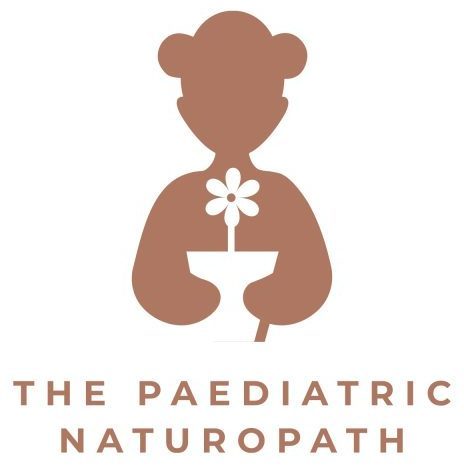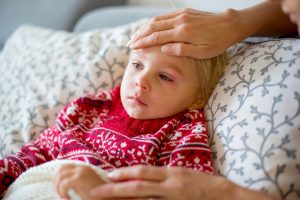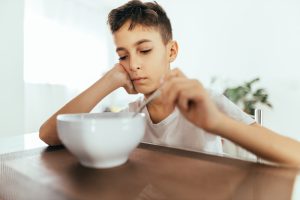Parasites: Organisms that live in or on us relying on us for survival.
Those pesky head lice are a parasite.
And so are pinworms? Read here for some tips to get rid of those wriggling ones.
Today we are going to talk about the parasites that can cause problems in our little one’s guts and how we might suspect our kids might have one!
Gut parasites are very common and are often caught in crowded places such as day care centres and schools but even from other members of your family at home.
Chronic abdominal pain and diarrhoea are good reasons to rule out a parasitic infection in children.
Here are some of the more common ones that we see in clinic that can cause your little one some issues.
Giardia
Giardia lamblia belongs to the protozoa family (the fancy scientific name for a single-celled organism). This tiny little parasite tends to more commonly affect infants and young children.
Some kids may not have any symptoms, but others can be left with a very unpleasant infection called Giardiasis that can last months if left untreated.
What to be on the lookout for?
- Diarrhoea
- Stomach cramping
- Bloating
- Nausea
- Loose and pale, greasy stools
- Fatigue
- Weight loss (if symptoms persist)
Blastocystis
Blastocystis is a very common parasite worldwide. It is more likely to be found in developing countries such as Indonesia, Brazil and Argentina as infections are higher in those who live closer to animals and who have less access to clean, uncontaminated food and water. Have you been overseas recently??
Blastocystis can be responsible for
- diarrhoea, abdominal pain and vomiting.
Symptoms can also include
- an itchy bottom, excess gas, constipation, weight loss and skin rashes or urticaria.
Having a weak immune system or gut dysbiosis (an unfavourable balance between good and bad bugs in the gut) can make you more prone to infection.
Not everyone has symptoms, though, and this may be due to the numerous subtypes of Blastocystis (currently estimated to be 17). The subtypes tend to be specific to different areas of the world. Ongoing research is investigating whether the different subtypes are linked to the different presentation of symptoms or no symptoms at all. Unfortunately, the tests available to detect parasites are not able to distinguish the subtype for Blastocystis.
Dientamoeba fragilis
Dientamoeba fragilis is another very common parasite found in the guts of people all around the world.
Symptoms can include
- abdominal pain,
- diarrhoea,
- excess gas,
- poor appetite,
- fatigue,
- nausea and/or vomiting,
- weight loss.
Again, not everyone who tests positive for Dientamoeba fragilis experiences symptoms.
Interestingly, research shows that if your child has worms then there is a good chance that they also have Dientamoeba fragilis. It is believed that Dientamoeba fragilis can use worms as a kind of a bus, hitching a ride in, making their way into our guts to hang out.
How did my child catch it?
Giardia, Blastocystis and Dientamoeba fragilis are found in the stools of those infected. Both humans and animals. They can also be found in contaminated food and water. They will make their way into your gut when you come into contact with the contaminated source and ingest the parasite.
This is most likely occurring via unwashed hands after using the toilet or changing nappies, eating contaminated food or food made by an infected person, picking it from contaminated towels or bedsheets, playing with infected animals, drinking contaminated water when hiking or camping, or even swimming in contaminated areas.
How do I know I have a parasite?
Your health practitioner can only know for sure that you have a parasite by taking a sample of your child’s stool and examining it. Your general practitioner will use polymerase chain reaction (PCR) and microscopy stool testing for the most accurate results to detect DNA for parasites including Giardia, Blastocystis and Dientamoeba fragilis.
If infection is suspected, it is important to test multiple samples over a period of time. The DNA found in the stool sample are from fragments shed from the parasites themselves and this happens in a cyclical wave. It may not be picked up on the first sample.
An alternative test that can be used to detect parasites is a comprehensive stool analysis called a GI Map. This is one that we use at The Paediatric Naturopath as it not only helps detect parasites but also provides useful information on overall gut health including the balance of good and bad gut bugs and markers for gut inflammation.
A comprehensive test will allow for a greater insight into what is going on in your child’s gut so that we can target the most influencing offender or reason behind their symptoms and provide individualised support to get them feeling better again.
If your worried a parasite might be at the bottom of your child’s on-going tummy pains and toilet troubles, get in touch today so we can work through this together.




